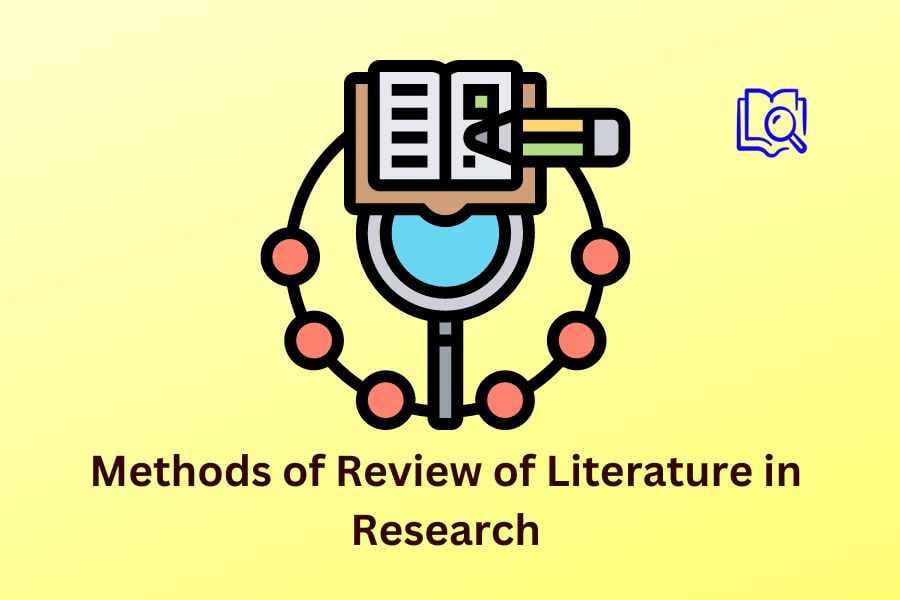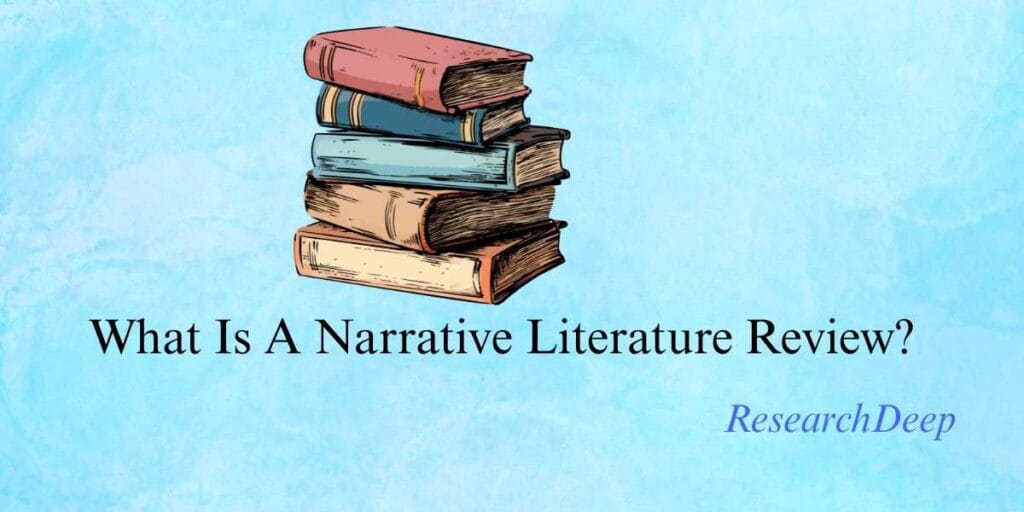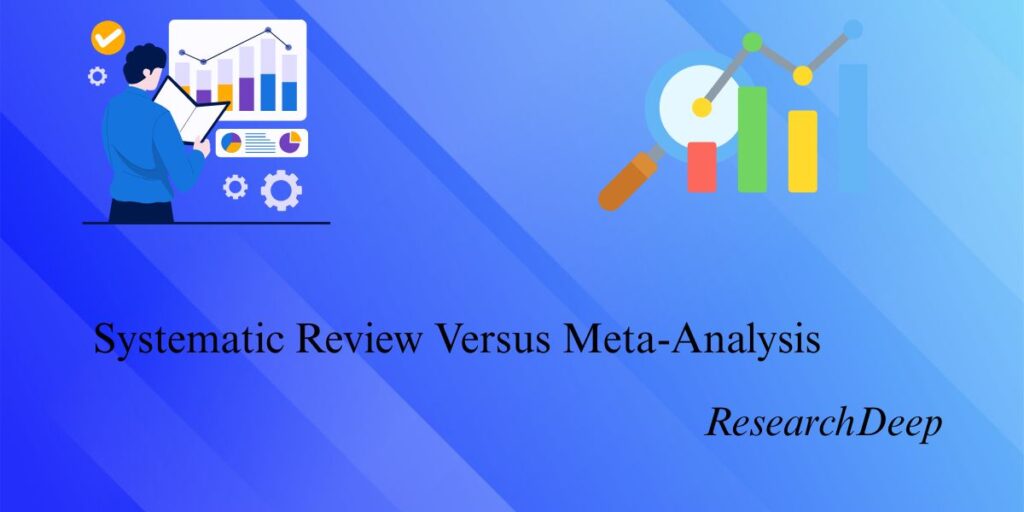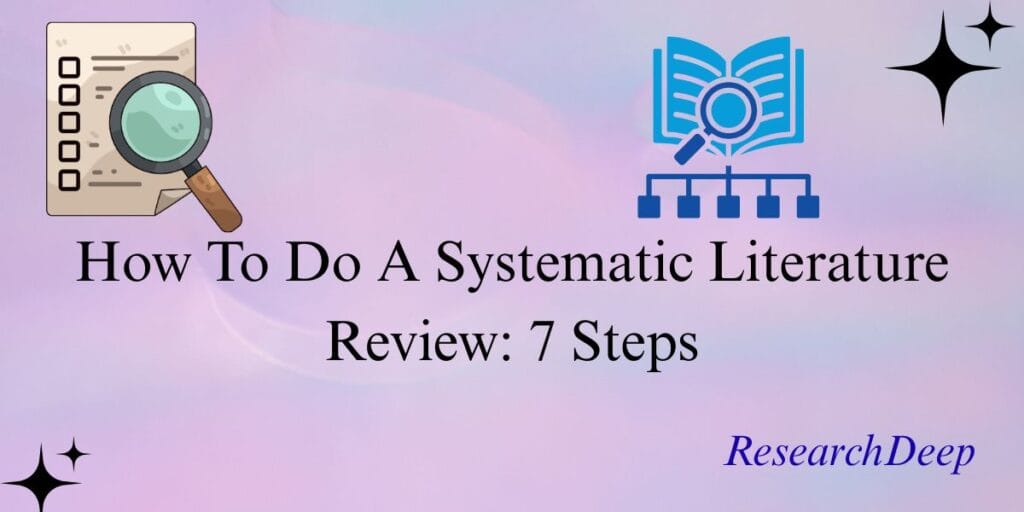Last updated on September 28th, 2025 at 04:05 am
The importance of reviewing literature is demonstrated by its potential to identify gaps in the existing knowledge and by avoiding duplication of efforts to provide relevance to your study, and it is a vital step in any research process.
It involves systematically evaluating and synthesizing existing research to comprehensively understand the topic.
There are several methods of review of literature in research, each tailored to specific research needs and objectives that are elaborated in this article.
Methods of Review of literature in research.
1. Narrative Literature Review
The narrative review method is a traditional approach where the researcher summarizes or provides a literature review abstract of existing literature on a topic.
It involves identifying trends, themes, and gaps in the research. This method does not follow a strict protocol but offers a broad overview.
| Pros | Cons |
|---|---|
| Provides a broad overview of the subject. | Is susceptible to researcher bias. |
| Allows flexibility in methodology | Lack of reproducibility |
2. Systematic Review
A systematic review follows a rigorous and structured protocol to identify, evaluate, and synthesize research. The aim is to minimize bias by using predefined eligibility criteria.
These reviews are often employed in healthcare and social sciences and are mostly available from the National Library of Science.
| Pros | Cons |
|---|---|
| Minimizes bias through structured methodology | Time-consuming and resource-intensive |
| Offers reproducibility and transparency | May exclude relevant studies not fitting strict criteria |
3. Meta-Analysis
A meta-analysis is a statistical technique used to combine the results of multiple studies to provide a more precise effect size or conclusion. This method is often applied in quantitative research.
| Pros | Cons |
|---|---|
| May exclude relevant studies not fitting strict criteria | requires access to raw data from multiple studies |
| Enhances statistical power | May oversimplify complex phenomena |
4. Scoping Review
A scoping review is used to map the key concepts underpinning a research area.
It explores a broader research question compared to systematic reviews and is used to identify gaps in the existing literature.
| Pros | Cons |
|---|---|
| Broad in scope | Less detailed compared to systematic reviews |
| Useful for identifying research gaps | May include studies with low evidence levels |
5. Critical Review
In a critical review, the researcher critically evaluates existing literature to provide new perspectives or challenge current assumptions.
This method focuses on evaluating the strengths and weaknesses of various studies.
| Pros | Cons |
|---|---|
| Offers deep insights and critical analysis | Subject to researcher bias |
| Helps refine or challenge existing theories | Can be time-consuming |
6. Cochrane Review
A Cochrane review is a highly rigorous type of systematic review, specifically aimed at healthcare research.
It follows detailed guidelines provided by the Cochrane Collaboration to ensure high quality and reliability.
| Pros | Cons |
|---|---|
| Trusted in healthcare and medical research | Limited to healthcare subjects |
| Follows stringent quality control | Requires extensive expertise and resources |
7. Rapid Review
A rapid review is an accelerated form of systematic review intended to provide timely evidence for decision-making.
While it follows the systematic review structure, it is usually done within shorter timelines.
| Pros | Cons |
|---|---|
| Provides quick, actionable insights | Less comprehensive compared to full systematic reviews |
| Useful for urgent research needs | May sacrifice thoroughness for speed |
8. Integrative Review
The integrative review method allows the inclusion of both qualitative and quantitative studies.
It provides a more holistic understanding of a particular phenomenon by combining various research designs.
| Pros | Cons |
|---|---|
| Combines a wide range of data sources | Risk of methodological inconsistencies |
| Offers comprehensive insights | Requires strong methodological skills |
9. Qualitative Review
In a qualitative review, the focus is on synthesizing qualitative studies.
This approach emphasizes understanding complex phenomena from a subjective perspective.
| Pros | Cons |
|---|---|
| Captures in-depth insights | Difficult to generalize findings |
| Provides context-rich analysis | Time-consuming |
10. Umbrella Review
An umbrella review summarizes the results of multiple systematic reviews into a single document.
It is particularly useful in fields with extensive review literature.
| Pros | Cons |
|---|---|
| Summarizes vast amounts of literature | Can overlook nuanced differences between reviews |
| Saves time for researchers | This may result in oversimplification |
Comparison of Literature Review Methods
| Method | Structured Approach | Suitable For | Type of Research |
|---|---|---|---|
| Narrative Review | No | Broad topics | Qualitative and Quantitative |
| Qualitative and Quantitative | Yes | Broad Topics | Quantitative |
| Meta-Analysis | Yes | Specific Focus | Quantitative |
| Scoping Review | No | Gaps in research | Both |
| Critical Review | No | Challenging assumptions | Qualitative |
| Cochrane Review | Yes | Healthcare | Quantitative |
| Rapid Review | Yes | Time-sensitive topics | Quantitaive |
| Integrative Review | Yes | Mixed methods | Both |
| Qualitative Review | Yes | In-depth topics | Qualitative |
| Umbrella review | Yes | Summarizing multiple reviews | Both |
FAQs
What is the difference between a systematic review and a meta-analysis?
A systematic review follows a structured methodology to identify and synthesize research, while a meta-analysis uses statistical methods to combine the results of multiple studies.
Why is the narrative review method less preferred for scientific research?
Narrative reviews, while broad, are more susceptible to bias and lack the reproducibility of more structured methods like systematic reviews.
Can I use multiple review methods in a single research project?
Yes, researchers sometimes combine different methods to provide a more comprehensive overview, especially in multidisciplinary research.
Conclusion
Selecting the appropriate method of review of literature in research is crucial for ensuring the quality, relevance, and depth of the literature review.
Whether a researcher opts for a traditional narrative review or a more structured approach like a systematic review, understanding the strengths and limitations of each method is key to making informed decisions.
Each approach offers unique advantages depending on the research questions, available resources, and the desired level of comprehensiveness. For researchers aiming to provide a robust foundation for their studies, mastering these methods is essential.




